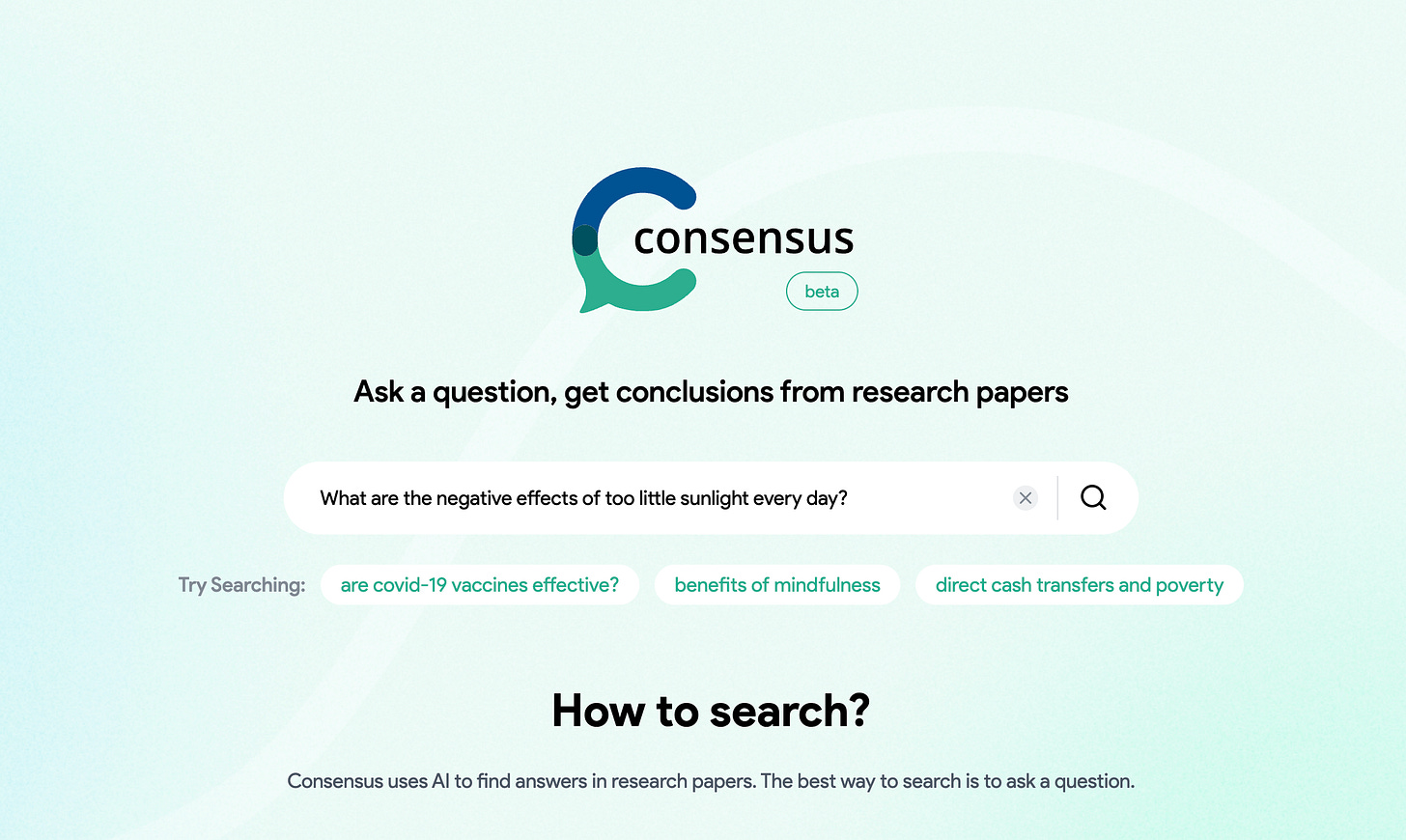Research with AI: How To Discover Secrets, Ideas, Hidden Gems
How to research anything in minutes (not days). This works for copywriting, storytelling, and even writing poems.

The quality of your AI output is directly correlated to the quality of your prompt.
This is true throughout any writing process that use AI.
And it’s especially true for doing any kind of research.
This is how GPT-3 (and ChatGPT) can refine your thinking, like a good sparring partner.
If you get crappy output, it's because you're using crappy prompts.
That's a sign of crappy, lazy thinking.
Refine, revise, try again.
I’ve seen people call good prompting anything from “prompt craft” to “prompt engineering”.
Lots of people make fun of that concept, too.
But right now, at least, prompting matters more than anything.
I’ll share a list of probably over 100+ prompts you can use for anything in a minute.
But first…
Here’s a quick tutorial on doing research with the help of AI.
(My goal with these tutorials is to get you started and using AI as fast as possible. No one needs a 10 hour lecture. You need to pick any topic, anything, and just try the robots).
How to start your research the right way
Let’s pick a random topic so you can see how this works:
What are the negative effects of too little sunlight every day?
Now let’s look at a handful of tools:
Elicit: Ask a research question, get answers
Consensus: Ask a question, get conclusions from research papers
You need to keep asking questions and use prompts to find interesting information, like this, with Talk to Books:
That right there can be used for a fascinating historical angle, if I’m either writing about vitamin D in general or writing an email about the discovery.
And if you keep trying questions about what’s unique, different, interesting or controversial about your topic—in this case, Vitamin D…
You start to uncover fascinating tidbits that might take you days or weeks to find.
A quick search on turmeric yields this:
Ancient traditional use. East Indian cooking. For all sorts of health reasons.
Don’t tell me there’s nothing interesting in that.
I’m counting at least eight things I could turn into either a cookbook, health book, ads, emails or anything else.
Now let’s take something random we got from these tools and expand it with ChatGPT or GPT-3.
And we do so by asking both ChatGPT and GPT-3 interesting and varied questions, in the form of prompts.
Let’s say I have a product or service for men over 50 who are struggling with a vitamin D deficiency.
Here’s one example, taken from the output of any research tool:
The output from GPT-3 is similar but with some variation:
If you’re a copywriter, you could pick ANY of the output and easily transform it into an ad, email, or for use on a sales page.
Here’s a quick example from Copylime:
And another example:
You can turn all of that into bullets and use them in emails, ads, pages—anywhere.
From Jasper:
Not excellent copy, ready to be used—but even a mediocre copywriter can turn that into an ad.
If you’re a storyteller, writing fiction, you can use ANY of the output above and easily transform it into a scene description, from ChatGPT:
And from GPT-3:
The output went on, but you get the point:
By asking the right questions and exploratory statements, in the form of prompts, you can tease out a whole world for anyone—a customer or a reader of your fiction.
You can even have poems written for you:
So, let’s recap AI for research
For your research, for any writing project, the process and integration of various AI tools is simple:
Pick a piece, part, component or element of your product or service that you want to explore. You can also focus on the target audience.
Formulate interesting research questions and statements you can use in various tools that give you facts, research, and other kinds of output.
Build on your research with ChatGPT and GPT-3.
Use that output in tools like Copylime, Copy.ai, Jasper, and so on, to further refine output into whatever format is useful.
I haven’t even covered storyboarding what you do with image tools like Dall-E, Midjourney, or Stable Diffusion.
This should be plenty for you to know exactly what to do next and try out these tools yourself.
Here they are again:
Elicit: Ask a research question, get answers
Consensus: Ask a question, get conclusions from research papers
And of course, the ‘OGs’ of everything. You must use these if you’re serious about integrating AI into your writing process. Almost all other tools are based on what OpenAI puts out in the world:
But most importantly, you need great prompts. You can find a ton with a quick search, but here’s a good starting point:
(Well over a hundred and counting).
While I have your attention, here’s a podcast on AI and copywriting:
The Copywriter of the Future with Sam Woods & Kim Krause Schwalm
I had a conversation with one of the best copywriters in the world, Kim Krause Schwalm. If you don’t know who she is, you should. Kim is not just a phenomenal copywriter with a track-record that most copywriter wannabes dream about—she’s also a fantastic teacher. I’ve been her student many times, and continue to learn from here every week. Watch or listen to this conversation on Youtube.
Talk soon,
Samuel Woods
The Bionic Writer

















